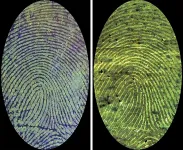(Press-News.org) Perhaps no other ocean creature lives in the human imagination like the great white shark. But while great white sharks might be plentiful in the minds of beachgoers across the country, there are only a handful of places in the world where white sharks can be consistently found. In those areas -- such as Central California, Guadalupe Island Mexico, South Australia and South Africa -- they tend to be found aggregated in small hotspots, often located around seal colonies.
Researchers have estimated that white shark populations are incredibly small, with only hundreds of large adults and a few thousand white sharks total in any of their global populations. This has made protecting white sharks a priority for conservation with many countries, including the United States and Mexico, having laws in place to prevent the catching and killing of the species.
After uncovering a previously unknown white shark hot spot in the central Gulf of California, however, a new study involving University of Delaware assistant professor Aaron Carlisle suggests that these low numbers for eastern north Pacific white sharks, especially those listed in the Gulf of California, might be underestimated. In addition, the researchers found that the mortality rates for these white sharks might be underestimated as well, as an illicit fishery for the species was uncovered in the Gulf of California, suggesting that fishers were killing many more white sharks than has been previously understood.
The research findings were published in Conservation Letters. Daniel J. Madigan, of the Department of Integrative Biology at the University of Windsor in Ontario, Canada, served as the lead author on the paper and Carlisle, assistant professor in UD's School of Marine Science and Policy in the College of Earth, Ocean and Environment, served as a co-author on the paper.
Underestimated Mortality
For this study, Madigan interacted with a small group of local fishermen and over several months that group killed about 14 large white sharks. Of these, almost half could have been mature females. This was a conservative estimate as other groups reportedly killed additional sharks during this time.
To show just how significant this new source of mortality might be, Carlisle pointed to a National Oceanic and Atmospheric Administration (NOAA) endangered species act status review on white shark populations from 2012. Using the best available information at the time, the NOAA report estimated that the adult female mortality rate for the entire eastern Pacific was likely around two annually.
"He found, in just a two-week time period, more mortality in this one location than what we thought for the whole ocean," said Carlisle. "It was pretty clear then that, well, something kind of important is happening here."
Carlisle explained that the mortality estimate of the earlier NOAA study could have been off because calculating mortality for animals in the ocean -- figuring out how many die naturally or unnaturally -- is one of the most difficult population metrics to quantify.
What makes this finding particularly interesting is that this population of white sharks -- the eastern Pacific population of white sharks -- is perhaps the most well-studied group of sharks on the planet. Here, in the midst of all this scientific research, was a seemingly robust population of white sharks that had eluded scientific study.
"It's been about 20 years since a new 'population' of white sharks has been discovered," said Carlisle. "The fact that the eastern Pacific has so much infrastructure focused on white sharks and we didn't know that there were these sites in the Gulf of California was kind of mind-blowing."
Future steps
Now that the aggregation has been identified, Carlisle said that there are many more scientific questions that need to be answered.
There is a pressing need to study and quantify the population of sharks in the new aggregation site. In particular, it is unknown whether these sharks are part of the other known populations of white sharks in the eastern Pacific, which include populations that occur in Central California and Guadalupe Island Mexico, or whether they belong to a third, unknown population.
They are also interested in finding out how long the aggregation sites have been there and how long people have been fishing at the sites.
"One of the big points of this paper was to raise the red flag and let managers and scientists know that this is going on and this population is here and needs to be studied," said Carlisle. "Hopefully, it will be studied by some local researchers who are invested and working with the local fishing communities because these fishing communities are all heavily dependent on marine resources and fisheries."
Carlisle stressed that the researchers are not looking to cause problems for the local fishing communities that they worked with for the study.
Instead, perhaps there is an opportunity for these communities to learn about other opportunities with these animals through avenues like eco-tourism, educating them on the fact that these sharks are worth more and could provide a steadier stream of revenue alive rather than dead.
"This seems like it would be a perfect situation for ecotourism, much like there is at Guadalupe Island," said Carlisle. "There could be huge opportunities to build businesses around these populations of sharks, and that's just from a management point of view. From a science point of view, there's all sorts of fun things you could do."
Still, Carlisle said that more than anything, this paper highlights just how little we know about what is going on with sharks in the ocean.
"Even though we've studied these animals so much, we still know so little," said Carlisle. "How many fish are in the ocean is a very old but very hard question to answer."
INFORMATION:
UNIVERSITY PARK, Pa. -- A new approach to gene editing using the CRISPR/Cas9 system bypasses disease-causing mutations in a gene, enabling treatment of genetic diseases linked to a single gene, such as cystic fibrosis, certain types of sickle cell anemia, and other rare diseases. The method, developed and tested in mice and human tissue cultures by researchers at Penn State, involves inserting a new, fully functional copy of the gene that displaces the mutated gene.
A proof-of-concept for the approach is described in a paper appearing online April 20 in the journal Molecular Therapy.
The CRISPR/Cas9 system has allowed promising new gene therapies ...
The number of solar panels within shortest distance from a house is the most important factor in determining the likelihood of that house having a solar panel, when compared with a host of socio-economic and demographic variables. This is shown in a new study by scientists using satellite and census data of the city of Fresno in the US, and employing machine learning. Although it is known that peer effects are relevant for sustainable energy choices, very high-resolution data combined with artificial intelligence techniques were necessary to single out the paramount importance of proximity. The finding is relevant for policies that aim at a broad deployment of solar panels in order to replace unsustainable ...
The lifestyle and eating habits of human groups that have lived for thousands of years can be examined by tooth. An international research group analyzed the prehistoric findings of the Neolithic Age. In addition to providing knowledge about the lifestyles of people who lived in prehistoric times, a novel study of tooth remains paved the way for other methods previously not used. This study applies the complementary approaches of stable isotope and dental microwear analyses to study the diets of past people living in today's Hungary. Their joint results were published in the scientific journal Scientific Reports.
The Great Hungarian Plain is considered one of the most interesting areas for archeology because ...
Coronavirus researchers led by Professor Rolf Hilgenfeld of the University of Luebeck and PD Dr. Albrecht von Brunn of the Ludwig-Maximilian Universitaet (LMU) in Munich have discovered how SARS viruses enhance the production of viral proteins in infected cells, so that many new copies of the virus can be generated. Notably, coronaviruses other than SARS-CoV and SARS-CoV-2 do not use this mechanism, which may therefore provide a possible explanation for the much higher pathogenicity of the SARS viruses. The findings appear in the EMBO Journal.
Coronaviruses that cause harmless colds in humans were discovered more than 50 years ago. When it emerged in 2002/2003, the SARS coronavirus was the first coronavirus found to cause severe pneumonia ...
For more sustainability on a global level, EU legislation should be changed to allow the use of gene editing in organic farming. This is what an international research team involving the Universities of Bayreuth and Göttingen demands in a paper published in the journal "Trends in Plant Science".
In May 2020, the EU Commission presented its "Farm-to-Fork" strategy, which is part of the "European Green Deal". The aim is to make European agriculture and its food system more sustainable. In particular, the proportion of organic farming in the EU's total agricultural land is to be increased to 25 percent by 2030. However, if current EU legislation remains in place, this increase will by no means guarantee more sustainability, as the current study by scientists from Bayreuth, Göttingen, ...
Meaningful legislation addressing health care inequities in the U.S. will require studies examining potential health disparities due to geographic location or economic status.
An interdisciplinary team at the Medical University of South Carolina (MUSC) and the University of South Carolina (UofSC) report in the Journal of Public Health Dentistry that rural children are less likely to receive preventive dental care than urban children. Using samples from 20,842 respondents from a 2017 National Survey of Children's Health, the team determined the existence of an urban-rural disparity in U.S. children's oral health. ...
After pouring beer into a glass, streams of little bubbles appear and start to rise, forming a foamy head. As the bubbles burst, the released carbon dioxide gas imparts the beverage's desirable tang. But just how many bubbles are in that drink? By examining various factors, researchers reporting in ACS Omega estimate between 200,000 and nearly 2 million of these tiny spheres can form in a gently poured lager.
Worldwide, beer is one of the most popular alcoholic beverages. Lightly flavored lagers, which are especially well-liked, are produced through a cool fermentation process, converting the sugars in malted grains to alcohol and carbon dioxide. During commercial packaging, more carbonation can be added to get a desired level of fizziness. That's ...
(Boston)--A major obstacle in understanding and treating posttraumatic stress disorder (PTSD) is its clinical and neurobiological heterogeneity. In order to better treat the condition and address this barrier, the field has become increasingly interested in identifying subtypes of PTSD based on dysfunction in neural networks alongside cognitive impairments that may underlie the development and maintenance of symptoms.
VA and BU researchers have now found a marker of PTSD in brain regions associated with emotional regulation. "This marker was strongest in those with clinically impaired executive function or the ability to engage in complex ...
Careful criminals usually clean a scene, wiping away visible blood and fingerprints. However, prints made with trace amounts of blood, invisible to the naked eye, could remain. Dyes can detect these hidden prints, but the dyes don't work well on certain surfaces. Now, researchers reporting in ACS Applied Materials & Interfaces have developed a fluorescent polymer that binds to blood in a fingerprint -- without damaging any DNA also on the surface -- to create high-contrast images.
Fingerprints are critical pieces of forensic evidence because their whorls, loops and arches are unique to each person, and these patterns don't change as people age. When violent crimes are committed, a culprit's fingerprints inked in ...
Water touches virtually every aspect of human society, and all life on earth requires it. Yet, fresh, clean water is becoming increasingly scarce -- one in eight people on the planet lack access to clean water. Drivers of freshwater salt pollution such as de-icers on roads and parking lots, water softeners, and wastewater and industrial discharges further threaten freshwater ecosystem health and human water security.
"Inland freshwater salt pollution is rising nationwide and worldwide, and we investigated the potential conflict between managing freshwater salt ...




